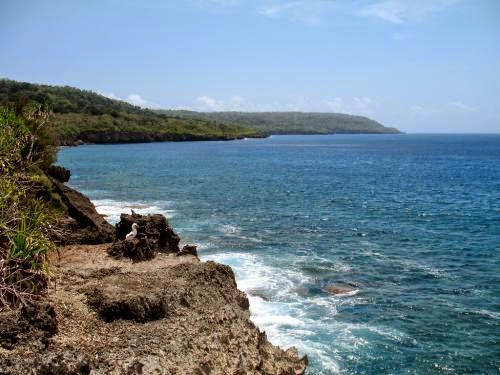
Geological samples from Christmas Island have been analysed by a West Australian scientist, giving valuable insight into its unique volcanic history.
Curtin University geochronologist Dr Fred Jourdan says while continents are often the subject of geological investigation, ocean geology is less studied and the results of the Christmas Island study adds important information to the field.
The report he co-authored has been published in Gondwana Research.
It describes the Christmas Island area as an extensive zone of volcanism in the north-east Indian Ocean, consisting of numerous submerged seamounts and flat topped guyots.
It explains the island has experienced multiple episodes of volcanism that are exposed sporadically along its coastline.
It is the only island in the region to show intraplate volcanism in the form of basaltic rocks that are exposed above sea level.
Dr Jourdan says the project was a collaboration with Macquarie University. Samples were collected by a student from Macquarie University and tested at Curtin University using 40Ar/39Ar geochronology and paleomagnetism.
Dr Jourdan says this is where the ‘real science’ of finding their origin began.
“What we did was two things; we established the age of the various rocks on the island at the time they were erupted, and we established the position of the island through time,” he says.
“We needed to look at where it was before, to understand why there is volcanic activity at all—is it random or related to something in particular?
“We measured two different ages but we know, comparing it to other seamounts, there are in fact three periods of volcanic activity.
Three stages of Christmas Island volcanic activity
“The oldest happened when Australia and India separated and the rock left behind melted to create a seamount—that was the first volcanic activity, although we didn’t sample this and at this time, the island was much further south than it is now.
“The second, happened between 43 and 37 million years ago—it happened when the continent moved north above a hot zone in the mantle.
“Nothing happened for 30 million years until, in its northward movement toward the European-Asian plate; the plate cracked five million years ago and the magma could easily rise through the cracks.”
Dr Jourdan says similar low volume intraplate volcanism had previously been observed at similar tectonic settings to the Japan and Tonga trench.
“…We put forward the Indo Australian plate subduction setting as a likely candidate for this phase of introceanic volcanism.”
More information:
Rajat Taneja, Craig O’Neill, Mark Lackie, Tracy Rushmer, Phil Schmidt, Fred Jourdan, “40Ar/39Ar geochronology and the paleoposition of Christmas Island (Australia), Northeast Indian Ocean,” Gondwana Research, Available online 27 April 2014, ISSN 1342-937X, dx.doi.org/10.1016/j.gr.2014.04.004.
Note : The above story is based on materials provided by Science Network WA









